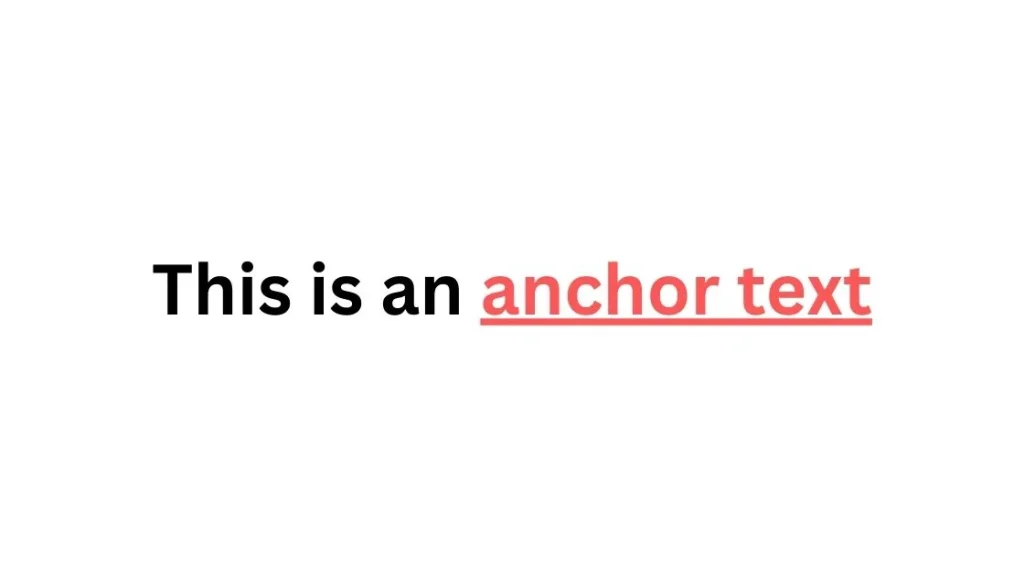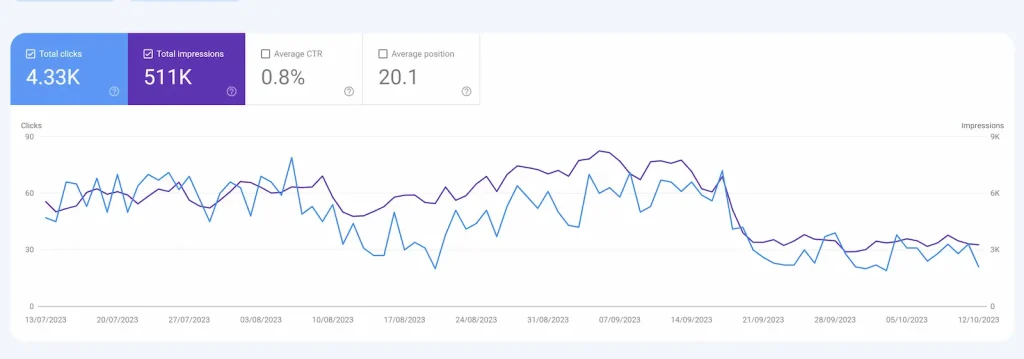Key Takeaways
- Anchor text is the visible links to your website or blog article to other pages on the internet
- One of the most important factors is choosing the right type of anchor text
- Including too much anchor text can have a negative impact on your site's rankings.
Anchor text allows you to customize the words that lead to an affiliate site or just link to reliable information. Propper link building (which is vital in marketing) can’t be done without incorporating well-thought-out SEO-friendly anchor text.
But, what is anchor text, and how do you properly use it without being spammy? Let’s take a look. Anchor text is the visible links to your website or blog article to other pages on the internet. A website or blog needs to have a good generic anchor because it helps increase traffic and leads from search results and linked pages.
There are many benefits to using anchor text; overall, it’s crucial for a successful online marketing campaign. By incorporating proper anchor text using natural language into blog posts and articles, you can increase web traffic and SEO rankings. The best anchor text includes keywords, so when choosing which words or phrases to use, consider both the keyword potential of the phrase and how well it will fit into your content marketing strategy.
In this blog, we’ll delve into the heart of what anchor text is, how it works, and some tips for optimizing your surrounding text strategy.
Different Types of Anchor Text

Exact Keyword Anchor
An “exact” keyword anchor is a phrase or sentence that you use as a placeholder for the target keyword(s) in your content. This helps to improve the relevancy of your content and increase click-through rates (CTRs).
How does it work? First, identify the main keywords that you want to target with your content. Then, find an appropriate exact match anchor text for each of these keywords. The syntax for this process varies depending on the platform you’re using, but typically it involves inserting one or more word forms of your targeted key phrases near the beginning (or end) of your article, followed by an asterisk (*).
Here’s an example: In Google AdWords*, examples include “Google*Adwords” in your headline and body, as well as having specific ad words such as “SEO*Google ads”, etc. You can also add these phrases directly into paragraphs and sentences within your text.
Partial-match Anchor
Partial-match anchors are particularly useful for SEO purposes because they allow you to target specific keywords within a particular sentence. The flexibility of Partial-match Anchors allows you to focus on precisely what people are looking for without having too much competition from other pages with similar content. Partial match anchors also tend to be more powerful than full match anchors because Google favours websites that show off their expertise by targeting relevant keywords throughout their site instead of just one spot.
How does it work? If you want to rank high in search engine results for, say, cold-pressed juice, as an example, you could use an anchor text like “100 cold-pressed juices.” This would include variations such as “best cold-pressed juice brand” and “top 50 best cold-pressed juice bars in the USA” which would all link back to your main destination or home page.
Naked Links
There are several reasons why you might want to use a naked link in your online marketing strategy and also many reasons why you wouldn’t. In a nutshell, many see these links as ‘sneaky marketing’ but it does provide you with many benefits – even if it is not considered SEO best practice. Essentially this is the clickable link text in a hyperlink that doesn’t include the URL of the destination page.
How does it work? Naked links are often used to promote content on social media platforms like Twitter and Facebook. Naked links are also used in search engine optimization (SEO) to boost traffic to website pages from search engines.
When users click on a naked link, they’re taken directly to the source page without being prompted for any information or credentials about that source. This allows you to target your audience with more precision since they won’t have any opportunity to stumble upon irrelevant or misleading information along the way.
Charm Anchor
A CHARM anchor text is a phrase that you use as the keyword in your Anchor Text Field on Google Search results pages. This phrase will be used to “anchor” your search result page to the current page so that users can more easily find what they’re looking for.
How does it work? CHARM anchors work like built-in links: once clicked, they direct searchers away from the search results page and back to the original web page where you placed them. In other words, using a CHARM anchor helps keep people on your site longer – which ultimately leads to higher click-through rates (CTR) and better conversion rates.
You can easily create a CHARM anchor by incorporating synonyms of your target market in your charm anchor text or you can develop a catchy phrase that encapsulates what you offer perfectly well. By analysing your traffic data you can easily find your target audience, thus will help to create the perfect CHARM anchor.

Branded Anchor Text (BAT)
Branded anchor text (BAT) is a powerful tool used by businesses to rank higher in search engine results pages (SERPs). BATs are composed of three parts: the brand name, the phrase, and the link. The goal of a BAT is to make sure that all of these elements are relevant to your business and help you drive more traffic back to your website.
So, how does it work? Think of BATs as “mini-URLs” – they act just like regular URL addresses, but they’re explicitly customised for SEO purposes.
When people click on one of these links, they’re taken directly to your webpage instead of landing on random pages across the internet. These are frequently used within trademarked brands to market a new product or display a slogan. A great example of a branded anchor text would be ‘’Microsoft Word Professional’’ ‘iPhone 11’’ etc.
The more unique and relevant your BATs are, the better position you will be in when people type out queries about your brand or product online. And remember: always make sure you trademark any trademarks referenced within a BAT so other websites don’t attempt to claim them as their own.
How to Avoid Anchor Footprints
To avoid anchor text footprints, make sure all your referenced links point back to your original article or blog post. Also, keep in mind whom you are referencing and whether they would actually be interested in reading what you have to say. If not, don’t include an anchor text reference at all! This will help reduce clutter on your page and make it easier for readers to navigate their way around.
Furthermore, including too much anchor text can have a negative impact on your site’s rankings. In fact, some SEO experts believe that anchor text footprints are one of the main factors that contribute to poor ranking performance.
So, what should you do? The best way to avoid having an anchor text footprint is by being selective about which external links you include in your title and description tags. Make sure the links you choose are relevant and useful (rather than just linking out for no reason).

Which Type of Anchor Text to Use?
The best anchor text strategy depends on your individual website and content. However, some basic guidelines that can help you get started include using keywords in the title and body of your articles, including in the headline; linking to other relevant pages on your website; and including keyword-rich images and videos.
Always experiment with different anchor text strategies to see which ones work best for your site.
The more effective they are, the more traffic you will likely generate. By simply incorporating rich keywords into your blog post or article your anchor text will do its job, but the link needs to be trusted as well. Even with strong anchor text, a weak link can do more harm than good for your brand or website.
What Are They Again?
Anchor texts will help to disclose information on other pages or websites in order for your reader to expand on what they are reading. It is widely used throughout online marketing, whether you are running a blog, website, or social media page, anchor texts are crucial and should be carefully planned. The type of link anchor you use depends on your target audience and your specific business and marketing ethics.
When in doubt, an expert SEO agency that understands the best practices for optimizing your website should be your first port of call.
source https://webjuice.ie/what-is-anchor-text/

No comments:
Post a Comment